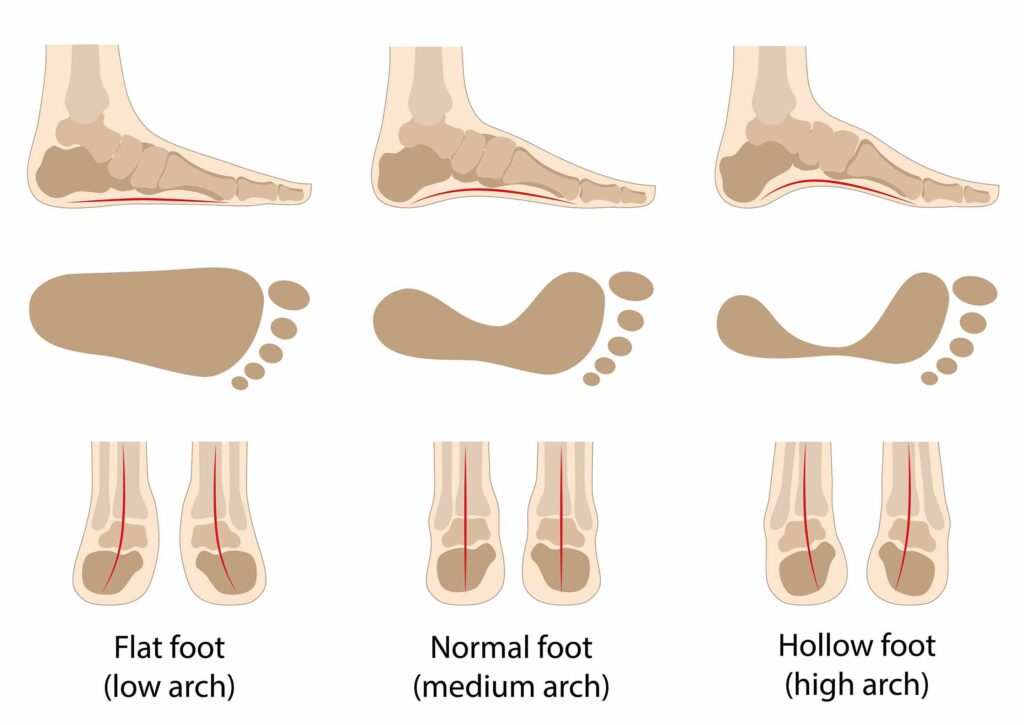Flat Feet
Flat feet may not sound particularly troublesome, but they can cause several painful issues that affect a person’s daily life. Flat feet are relatively common among children, most of whom develop normal arches as they develop. However, adults with flat feet tend to struggle with pain.
The good news is that the painful symptoms of flat feet can be alleviated through various treatment options. If you have flat feet, the Foot & Ankle Associates of Greater Pittsburgh are here to offer bespoke advice and treatment programs that help reduce pain and improve mobility. Get in touch today to book an appointment in Beaver, PA.
What are Flat Feet?
Flat feet in adulthood are often referred to as adult-acquired flatfoot deformity (AAFD). Put simply, this condition occurs when the arch on the inside of the foot collapses.
The condition often causes pain and discomfort, especially during bouts of physical activity. While many cases of flat feet are hereditary, some patients won’t notice any pain until later in life. Flat feet can change how a person walks, with the toes often pointing outward, and limit their ability to work or do the things that they love.
What are the Symptoms of Flat Feet?
Flat feet symptoms differ between individuals. Typically, someone with flat feet will experience one or more of the following issues:
- Pronation of the foot (when the foot rolls inwards).
- Pain along the posterior tibial tendon along the inside of the arch and ankle.
- Swelling of the ankle.
- Foot and ankle pain that gets worse during physical activity. High impact activity or activity on uneven terrain may seem to irritate it the most.
- Bony bumps on the foot, particularly if the patient has arthritis or suffered from previous injuries.
- Difficulty finding shoes that fit.
What are the Causes of Flat Feet?
The most common causes of flat feet include:
- Pronation: A structural deformity of the bones in your rearfoot can drive your foot into a pronated position that places too much strain on the inside of your foot and ankle. Over time, this altered position can cause damage to the anatomy that supports the arch.
- Age: As people age, their tendons and ligaments can succumb to chronic increased strain, especially if they have had a flat foot for many years.
- Previous injuries: Injuries such as stress fractures and ligament damage can alter the shape of the foot and put additional pressure on the arches.
- Diabetes: Diabetes can affect the muscles and tendons in the feet, contributing to deformity. As patients with diabetes often experience numbness in the foot, they may not notice their arches collapse until a late stage. In some cases, this can cause severe deformity to the foot.
- Arthritis: Arthritis can deteriorate the joints of the foot, and exacerbate the collapse of the arch.
- Obesity: Excess weight can place additional pressure on the feet and causes arches to collapse.
- Damage to bones and tendons in the feet: Damage to the bones and tendons of the foot can cause the joints to fall out of alignment, pushing the arches downward.
What Should I Do If I Experience Pain?
It is possible to live a pain-free life with flat feet. However, pain can develop suddenly, even in those who have lived with the condition for a large portion of their lives. The deformity can be progressive, so if you are experiencing pain, putting off assessment and treatment by a professional can lead to tendon damage, as well as arthritis in your subtalar and ankle joints. It is also vital for those with diabetes to seek treatment for flat feet, as they are unlikely to experience pain even if their flat feet affect joints and ligaments.
What are the Available Treatment Options?
Treatment options for flat feet are typically non-invasive and include:
- Non-steroidal anti-inflammatory drugs (NSAIDs): These medications can treat painful flat feet symptoms and are typically paired with other treatments.
- Physical therapy: Doing various stretches and exercises can help correct imbalances in the feet and help you maintain a healthy posture, while also building up muscles.
- Appropriate nutrition: The altered position of your joints in a flat foot increases the work required by tendons that support the arch. Carrying excess weight exacerbates the issue, but is often complicated by the inability to exercise due to the severe foot pain.
- Wearing a brace or splint: A brace can help to support the foot and limit painful motions. Sometimes custom ankle braces are used to brace the ankle and stop the progression of deformity.
- Surgery: Severe cases of flat feet may require surgery to realign the structure of your foot, recreate an arch, and minimize motion in the painful, arthritic joints.
Are You Worried About Your Flat Feet? Contact Us Today!
If you are suffering from flat feet pain or would like advice about your foot shape, we are here to help. Call our experts in Beaver, PA at (724) 774-1525 if you would like to book an appointment. Alternatively, you can fill out our contact form online and one of our team members will call you.
Contact Us
Office
336 College Avenue, Suite 106, Beaver,
PA , 15009
Monday: 8am – 12pm
Tuesday: 8am – 4:30pm
Wednesday: 8am – 4:30pm
Thursday: 8am – 4:30pm
Friday: 8am – 12pm
Saturday: Closed
Sunday: Closed


